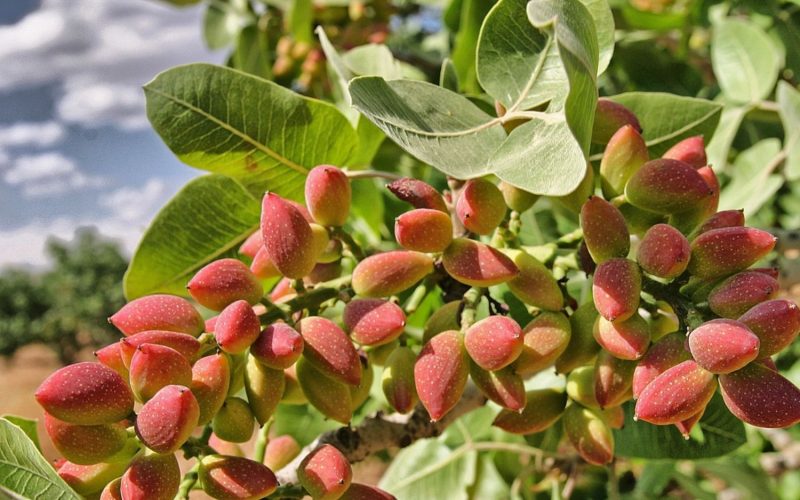Originating in Persia and grown commercially in Australia since the 1980s, pistachios take a few years to crop — but they’re worth the wait.
Words: Chloe Thomson
Even if you don’t grow them for their fruits, long-lived pistachios make beautiful feature trees. These small- to medium-sized deciduous trees do best in areas where winter is cool to cold and summers hot and dry. In fact, if you don’t have a cold enough winter, they won’t receive enough chill to flower properly.
Even if your pistachio tree never fruits, the changing colour of its autumnal leaves before they fall and the thick canopy of large dark green leaves through spring and summer are reason enough to grow one.
If you do want your tree to produce fruit you’ll need both a male and a female, as pistachio is dioecious and one male can pollinate up to 15 female trees.
There is a space-saving technique called duo planting — placing a single male and female very close together (20–30cm apart) — which can be done either in the ground or in a large pot.
The backyard-friendly trees can be pruned relatively hard to keep them around 2½–3m tall. Reducing lower branches to a lollypop shape can make the tree easier to mow around.
Pistachio trees will typically take 5–7 years to crop, though grafted trees might produce a harvest in 3–5 years.

Growing and Care
Late winter and early spring is the best time to plant. It’s also when you’ll find a number of varieties available online (Daleys, The Diggers Club) or at your local nursery.
Pistachio trees grow best in a full-sun spot in a Mediterranean climate. They can be grown in ground or in a large (50×50cm) pot.
Dig your hole twice as wide as the nursery pot and to the same depth, mix some compost and organic pelletised fertiliser through the loosened soil at the bottom of the hole then plant your tree.
If planting in a pot, choose a premium-quality organic potting mix and add organic fertilisers if needed.
Apply a potassium- and nitrogen-rich organic fertiliser each year in late winter or early spring as the tree is waking from its dormancy.
These trees will tolerate almost any soil but do prefer free-draining light, sandy or loamy soils. Waterlogging or really heavy soils are not suitable.
Once established, pistachio trees are very drought tolerant — they produce a long tap root that can reach deep into the soil.
Accordingly, deep but infrequent watering of established trees will encourage a better harvest.
Harvest
Once the hulls covering the nuts begin to change from green to a reddish then pinkish colour, your pistachios are ripe. Depending on your climate, this typically occurs at the end of summer or the start of autumn.
The husks will also easily rub off the shells when the nuts are ripe. If the hulls haven’t changed colours or the husks do not rub off, the nuts have not been pollinated and the shells will be empty.
Should this happen, try planting more sweet-smelling flowering plants nearby to encourage beneficial pollinators for the next season.
The ripe shelled nuts can be eaten fresh from the tree. Drying or salting pistachios for long-term storage can be a bit fiddly, depending on which method you choose and what kitchen equipment you have to hand.
Make sure you do your research well and find a method of drying or brining that suits your situation, as incorrectly dried nuts can go mouldy quickly and may even contain toxins.
Varieties to try
- Sirora is a high-yield tree bred by the CSIRO in the 1980s specifically for Australian conditions.
- Kerman is a popular commercial variety originally from Iran with good flavour and a nice green kernel.
Fun facts
Botanically speaking, the pistachio is not a nut. Like its cousin the cashew, it’s actually a drupe, or the seed of the fruit inside which it grows.
Pistachio label
Common name: Pistachio
Botanical name: Pistacia vera
Family: Anacardiaciae (cashew family)
Aspect & soil: Full sun; well-drained soil
Climate: Mediterranean, low humidity
Habit: Deciduous biennial-bearing shrub/tree
Propagation: Seed, graft
Difficulty: Hard








